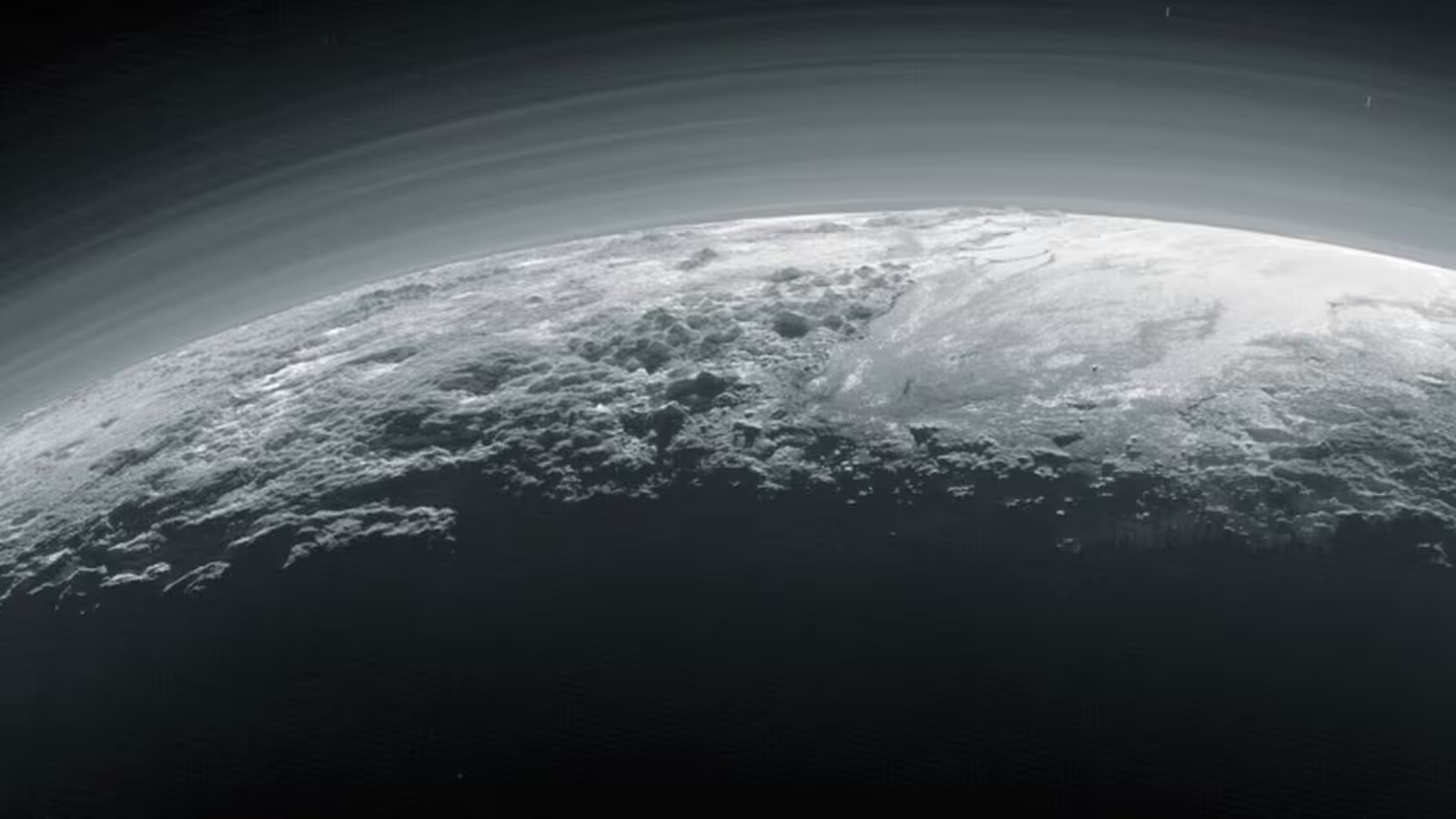5 Minutes
Revolutionizing Our Understanding of Pluto’s Atmosphere
When NASA's New Horizons spacecraft completed its historic flyby of Pluto and Charon in 2015, it dramatically expanded our knowledge of these distant and enigmatic worlds. The mission delivered stunning images and data, revealing not only geologically complex landscapes but also an unexpectedly dynamic atmosphere on Pluto. However, recent observations using the James Webb Space Telescope (JWST) have now provided unprecedented insights that fundamentally reshape our understanding of Pluto's atmospheric phenomena.
Unraveling the Secrets of Pluto’s Mysterious Haze
In 2022 and 2023, astronomers utilized the advanced capabilities of JWST to peer into Pluto’s atmosphere with unparalleled sensitivity. Focusing especially on the mid-infrared spectrum, these observations uncovered that Pluto’s atmospheric haze behaves in a way unique among all known planetary atmospheres in the Solar System. Unlike atmospheres dominated by the radiative properties of gas molecules, Pluto’s atmospheric energy balance is mainly governed by tiny haze particles composed of nitrogen, methane, and carbon monoxide. These particles play a crucial role in heating and cooling processes as they absorb sunlight and then emit infrared radiation, cycling between rising and falling within the atmosphere.
This characteristic was first postulated in 2017 by planetary scientist Dr. Xi Zhang of the University of California, Santa Cruz, who described the theory as a "crazy idea." Dr. Zhang and his colleagues theorized that if Pluto’s haze particles were cooling the atmosphere efficiently, they should emit a distinctive signal in the mid-infrared range—a phenomenon that could be detectable by a highly sensitive infrared observatory. The JWST, with its advanced Mid-Infrared Instrument (MIRI), provided the perfect tool to test this prediction.
"It was an exciting result to see the data match our theoretical expectations so closely," commented Dr. Zhang. "In planetary science, such rapid confirmation of a hypothesis is rare, and it opens an entirely new avenue for exploring atmospheric processes beyond Earth."

Scientific Exploration: From Hypothesis to Discovery
The international team led by Tanguy Bertrand from the Observatoire de Paris aimed JWST’s instruments at Pluto and Charon, capturing detailed data in the mid-infrared wavelengths (from 4.9 to 27 microns). The initial observations in 2022 focused broadly on both objects, measuring radiative fluxes at specific wavelengths (18, 21, and 25 microns) to understand overall atmospheric properties. In 2023, the focus narrowed specifically to Pluto, yielding a much clearer picture of how haze particles regulate the dwarf planet’s atmospheric temperature.
Comparative analysis of infrared data and thermal models allowed researchers to tightly constrain key characteristics such as surface temperature, thermal inertia (the resistance of a material to temperature change), and emissivity (the efficiency with which a surface radiates energy). Intriguingly, the data revealed subtle but important fluctuations in surface temperature during the rotational periods of both Pluto and Charon—evidence of complex thermal interactions between the two bodies.
Dynamic Ice Migration Across Pluto and Charon
Pluto’s surface and atmosphere are rich in chemistry, featuring volatile ices—primarily nitrogen, methane, and carbon monoxide. The distribution of these ices changes seasonally, as sunlight triggers sublimation and condensation, driving a slow migration of ice deposits across the planet’s surface. Some of the sublimated material even escapes Pluto’s gravity entirely and is redeposited onto its large moon, Charon, which otherwise lacks any significant atmosphere except possibly during brief seasonal outgassing.
No other location in the Solar System is known to exhibit this kind of planetary-scale, two-body volatilization and redistribution, marking Pluto and Charon as extraordinary case studies for planetary scientists.
The Uniqueness of Pluto Among Planetary Atmospheres
Perhaps the most profound finding of the JWST study is that, on Pluto, haze particles—not gas molecules—primarily determine how thermal energy is managed and dissipated into space. On most planetary bodies, gaseous components such as carbon dioxide or nitrogen act as the main agents of atmospheric heat transport and loss. On Pluto, however, the hazes—products of photochemical processes affecting nitrogen and methane—dominate this balancing act.
The research team highlights that this insight not only refines our understanding of Pluto but also enriches our view of atmospheric evolution elsewhere, including on early Earth, whose primordial atmosphere was also dominated by nitrogen and hydrocarbon compounds. Dr. Zhang explains, "By probing Pluto’s haze chemistry, we are effectively peering back into conditions that may have shaped the earliest, potentially habitable environments on Earth."

Implications Beyond Pluto: Titan and Triton
The uniqueness of Pluto’s atmosphere also prompts planetary scientists to reconsider the roles of haze particles on other worlds. Saturn’s moon Titan and Neptune’s moon Triton both possess nitrogen-rich, hydrocarbon-laden atmospheres shrouded in haze. The findings from Pluto encourage a new look at how haze-driven processes might impact these enigmatic moons as well—and suggest the need for further observational campaigns and comparative atmospheric modeling across the outer solar system.
Conclusion
The James Webb Space Telescope’s observations of Pluto have delivered a remarkable scientific milestone: direct confirmation that haze particles, rather than gases, control the energy dynamics of this distant dwarf planet’s atmosphere. This discovery not only validates theoretical predictions in record time but also challenges and expands our broader understanding of planetary atmospheres and their evolution. As scientists explore parallels with other hazy worlds like Titan and Triton, Pluto stands out as a natural laboratory for studying atmospheric chemistry in some of the coldest, most remote corners of our Solar System. These findings promise to fuel ongoing research into the origins and diversity of planetary atmospheres—and may even shed light on the ancient processes that once shaped the early Earth.
Source: universetoday



Comments